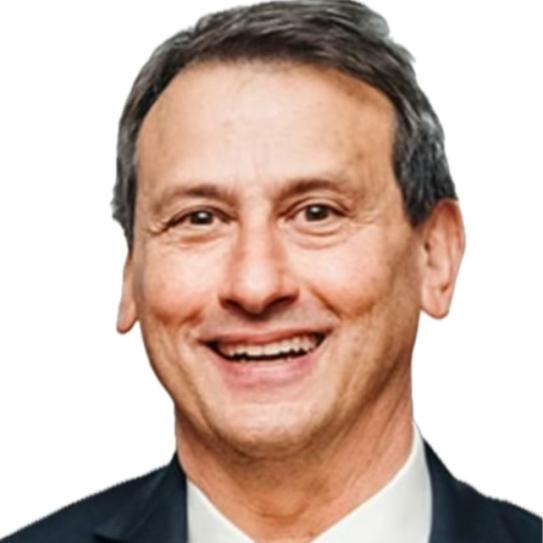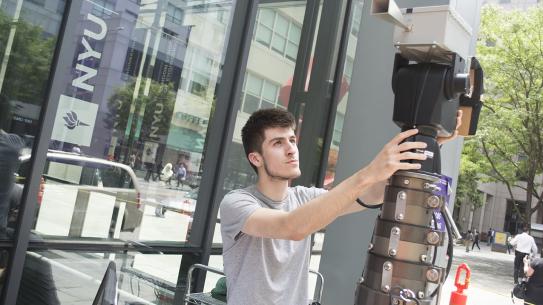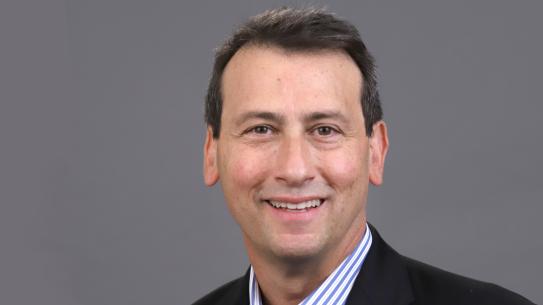Theodore (Ted) S. Rappaport
-
David Lee/Ernst Weber Professor of Electrical Engineering
-
Founding Director of NYU WIRELESS
-
Professor of Computer Science at NYU Courant
-
Professor of Radiology, NYU School of Medicine

Theodore (Ted) S. Rappaport is the David Lee/Ernst Weber Professor of Electrical Engineering at the NYU Tandon School of Engineering (NYU-Tandon) and is a professor of computer science at New York University's Courant Institute of Mathematical Sciences. He is also a professor of radiology at the NYU School of Medicine.
Rappaport is the founding director of NYU WIRELESS, the world's first academic research center to combine engineering, computer science, and medicine. Earlier, he founded two of the world's largest academic wireless research centers: The Wireless Networking and Communications Group (WNCG), now known as 6G@UT at the University of Texas at Austin in 2002, and the Mobile and Portable Radio Research Group (MPRG), now known as Wireless@ at Virginia Tech, in 1990.
Rappaport has pioneered radio wave propagation measurement and modeling for cellular and personal communications, has created new theories and techniques for wireless communication system design, and has pioneered broadband wireless communications systems, antennas, and circuits at millimeter wave frequencies, including the use of beamforming and beam combining. His research has influenced many international wireless-standards bodies, and he and his students invented the technology of site-specific radio frequency (RF) channel modeling and design for wireless network deployment - a technology now used routinely throughout the wireless industry, as well as the Emergency 911 (E911) system used in cellphone networks around the world. He also led the world to adopt millimeter wave and sub-THz spectrum and products for 5G and beyond.
Rappaport has served on the Technological Advisory Council of the Federal Communications Commission, assisted the governor and CIO of Virginia in formulating rural broadband initiatives for Internet access, and conducted research for NSF, Department of Defense, and dozens of global telecommunications companies. He has over 100 U.S. or international patents issued or pending and has authored, co-authored, and co-edited 24 books, including the world's best-selling books on wireless communications, millimeter wave communications, simulation, and smart antennas.
In 1989, he founded TSR Technologies, Inc., a cellular radio/PCS software radio manufacturer that he sold in 1993 to Allen Telecom which became an integral part of the Geometrix E911 product, which later became CommScope, Inc. In 1995, he founded Wireless Valley Communications, Inc., a pioneering creator of site-specific radio propagation software for wireless network design and management that he sold in 2005 to Motorola.
Rappaport received BS, MS, and Ph.D. degrees in electrical engineering from Purdue University, and is a Distinguished Engineering Alumnus and the Neal Armstrong Distinguished Visiting Professor at his alma mater. He is also a Hagler Fellow at Texas A&M University.
Dr. Rappaport can be reached by contacting NYU WIRELESS Administrator Pat Donohue at pat.donohue@nyu.edu, NYU WIRELESS Center Administrator Teresa Wang at tlw335@nyu.edu or his assistant Leslie Cerve at cerve@cs.nyu.edu. Contact Teresa Wang if you are interested in inviting Dr. Rappaport to give a presentation or attend a meeting.
Research News
Millimeter Wave and Sub-Terahertz Spatial Statistical Channel Model for an Indoor Office Building
This research, under direction of Theodore (Ted) S. Rappaport, was led by graduate students Shihao Ju, Yunchou Xing, and Ojas Kanhere.
Driven by ubiquitous usage of mobile devices and the explosive growth and diversification of the Internet of Things (IoT), sixth-generation (6G) wireless systems will need to offer unprecedented high data rate and system throughput, which can be achieved in part by deploying systems transmitting and receiving at millimeter-wave (mmWave) and Terahertz (THz) frequencies (i.e., 30 GHz - 3 THz). These regions of the electromagnetic spectrum are capable of massive data throughput at near zero latency, key to future data traffic demand created by such wireless applications as augmented/virtual reality (AR/VR) and autonomous driving.
Importantly, the linchpin for successful deployment of mmWave and THz systems for 6G wireless communications will be their performance in indoor scenarios. Therefore, accurate THz channel characterization for indoor environments is essential to realizing the designs of transceivers, air interface, and protocols for 6G and beyond.
To this end, NYU WIRELESS has introduced NYUSIM 3.0, the latest version of its MATLAB®-based open-source mmWave and sub-THz statistical channel simulation software, enabling the indoor MIMO channel simulations for frequencies from 500 MHz to 150 GHz with RF bandwidth of 0 to 800 MHz. The new NYUSIM 3.0 is publicly available with a simple MIT-style open source acknowledgement license. To date, NYUSIM has been downloaded over 80,000 times.
NYUSIM 3.0 implemented a 3-D indoor statistical channel model for mmWave and sub-THz frequencies following the mathematical framework of the 3-D outdoor statistical channel model adopted in earlier versions of NYUSIM. The indoor 3-D statistical channel model for mmWave and sub-THz frequencies, was developed from extensive radio propagation measurements conducted in an office building at 28 GHz and 140 GHz in 2014 and 2019 — in both line-of-sight (LOS) and non-line-of-sight (NLOS) scenarios. The team carefully measured over 15,000 power delay profiles to study temporal and spatial channel statistics such as the number of time clusters, cluster delays, and lobe angular spreads.
The adopted channel models for Version 3.0 are elaborated in a upcoming paper, “Millimeter Wave and Sub-Terahertz Spatial Statistical Channel Model for an Indoor Office Building” (to appear in IEEE Journal on Selected Areas in Communications, Special Issue on Terahertz Communications and Networking in the second quarter 2021) by a team of three students at NYU WIRELESS, and the Department of Electrical and Computer Engineering under Rappaport’s guidance, led by Ph.D. student Shihao Ju. Besides proposing a unified indoor channel model across mmWave and sub-THz bands based on the team’s indoor channel measurements, the work provides a reference for future standards development above 100 GHz.



